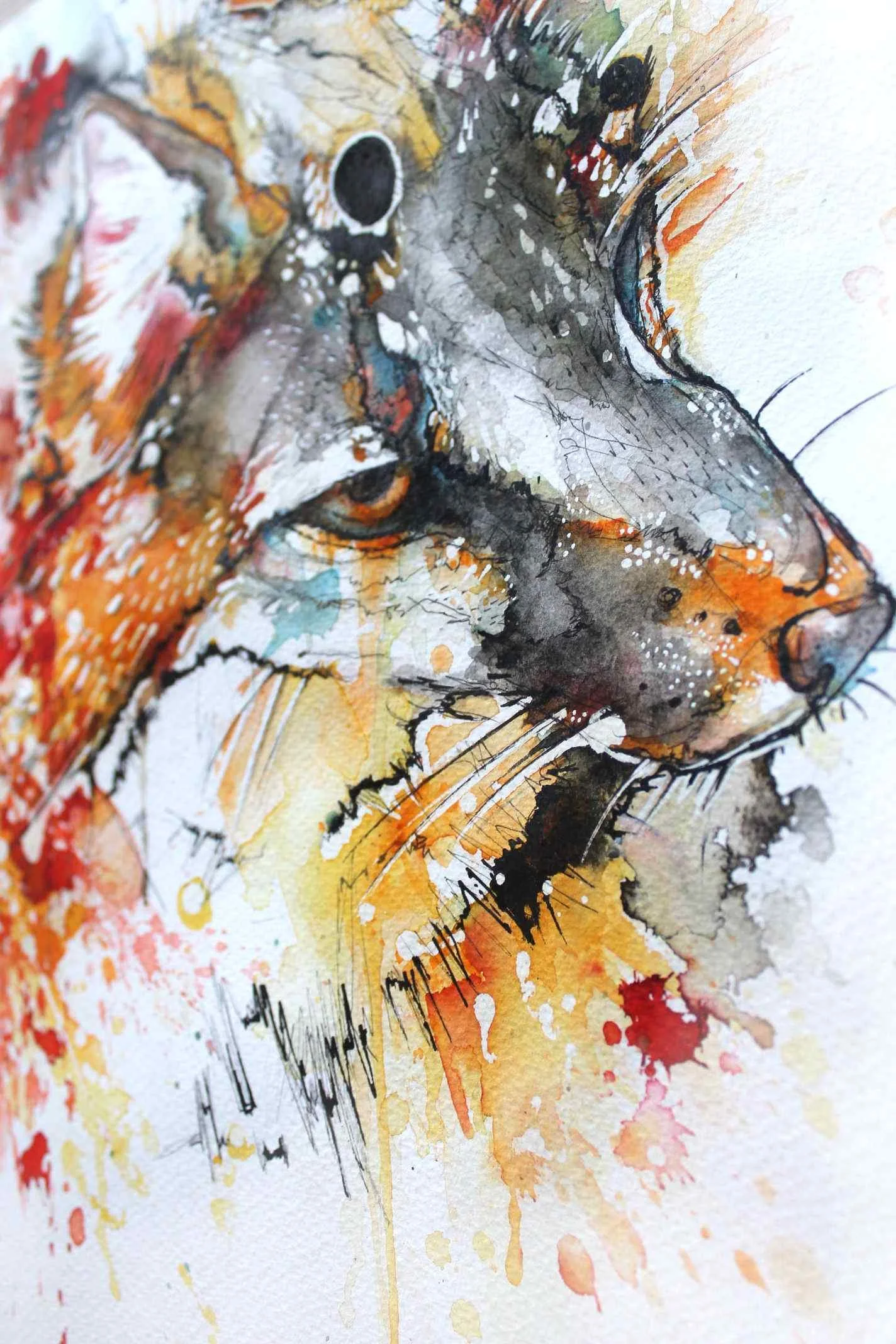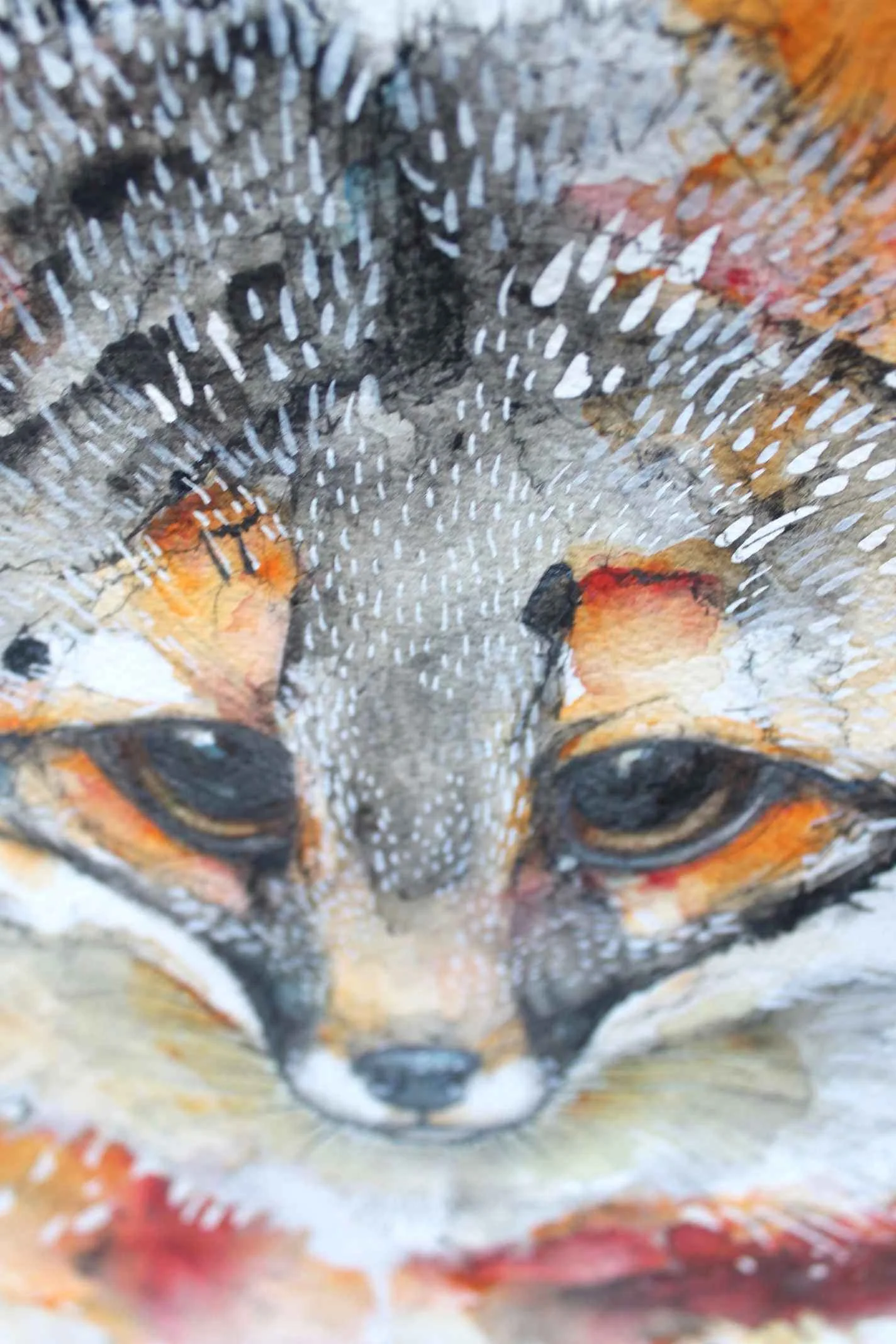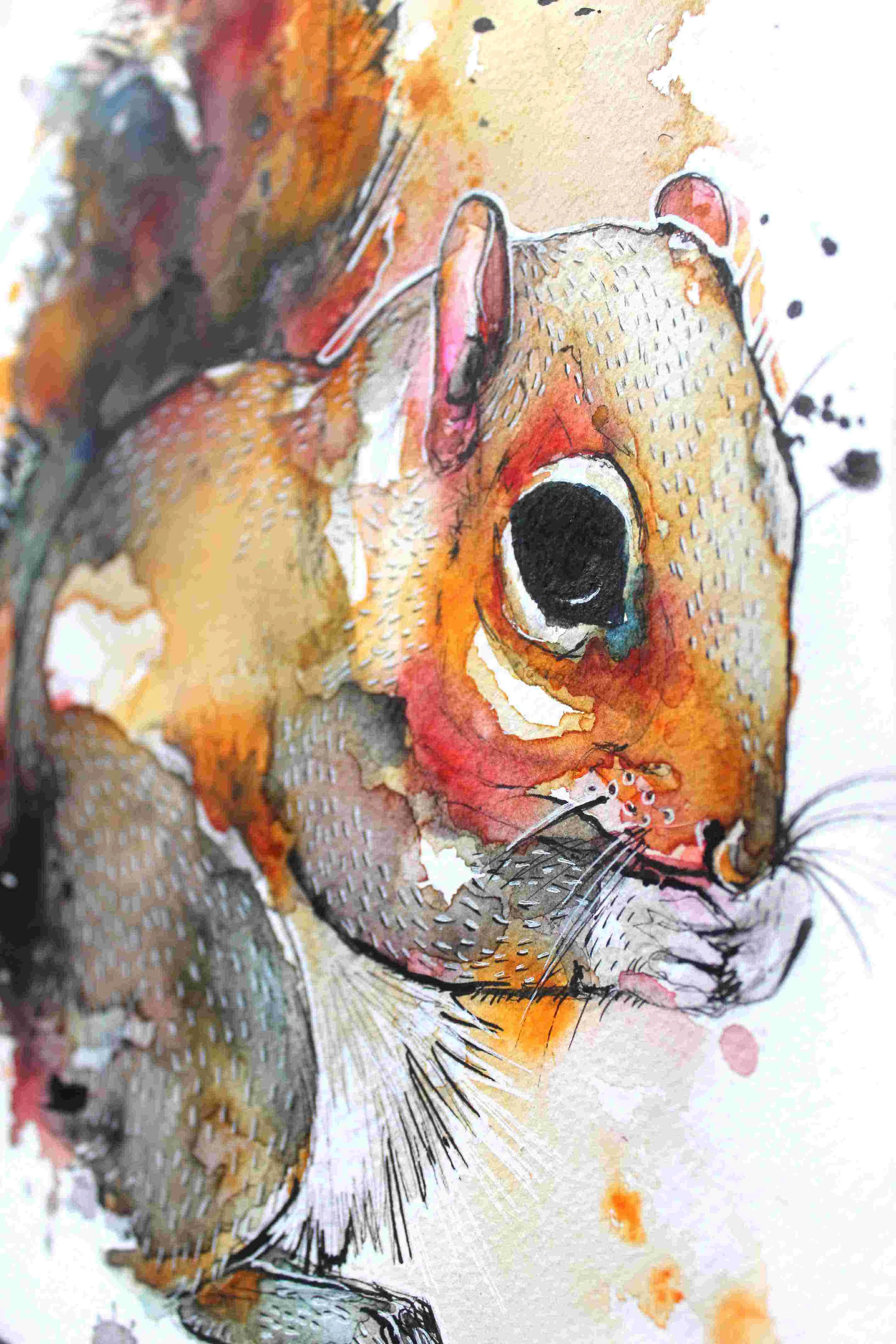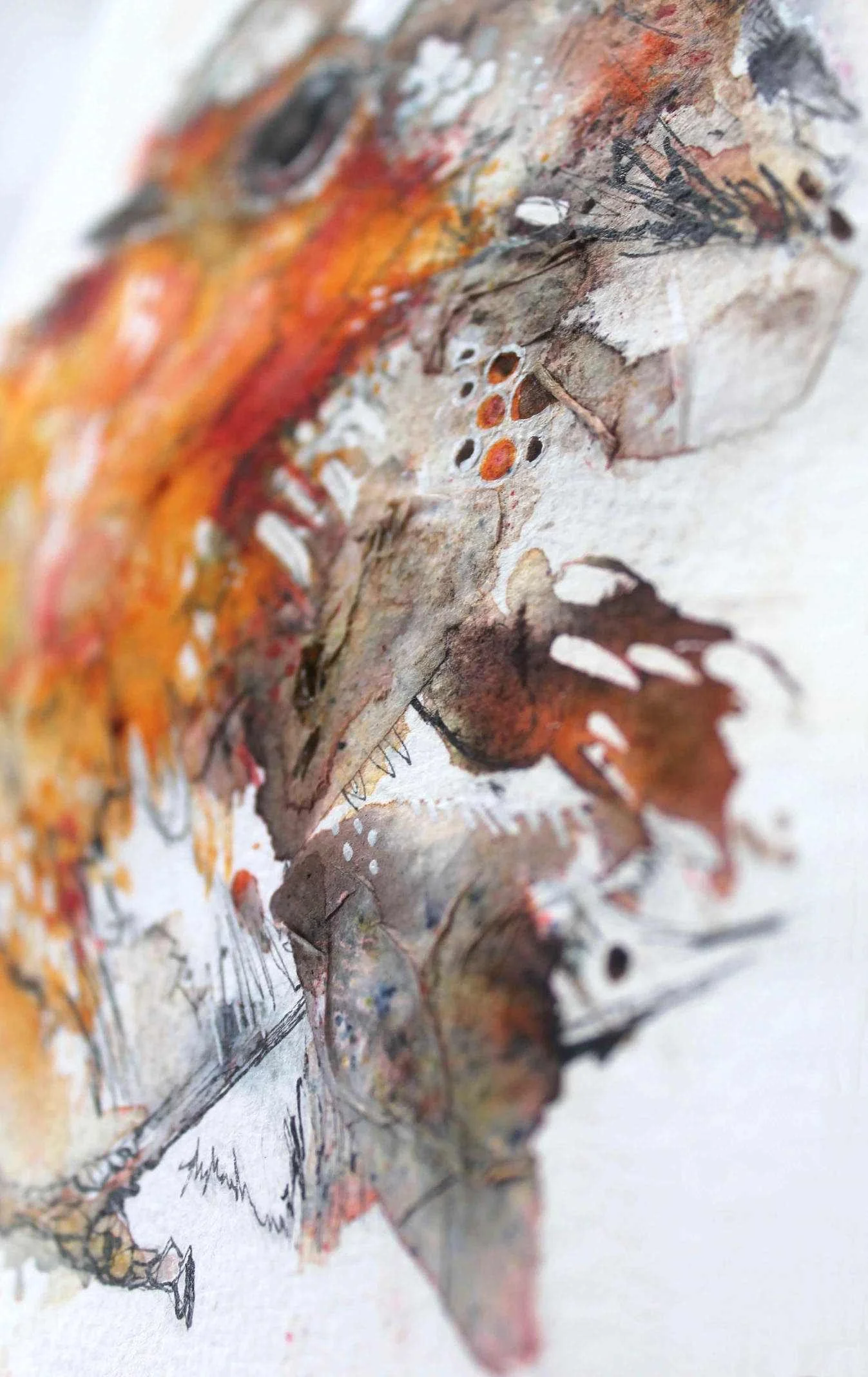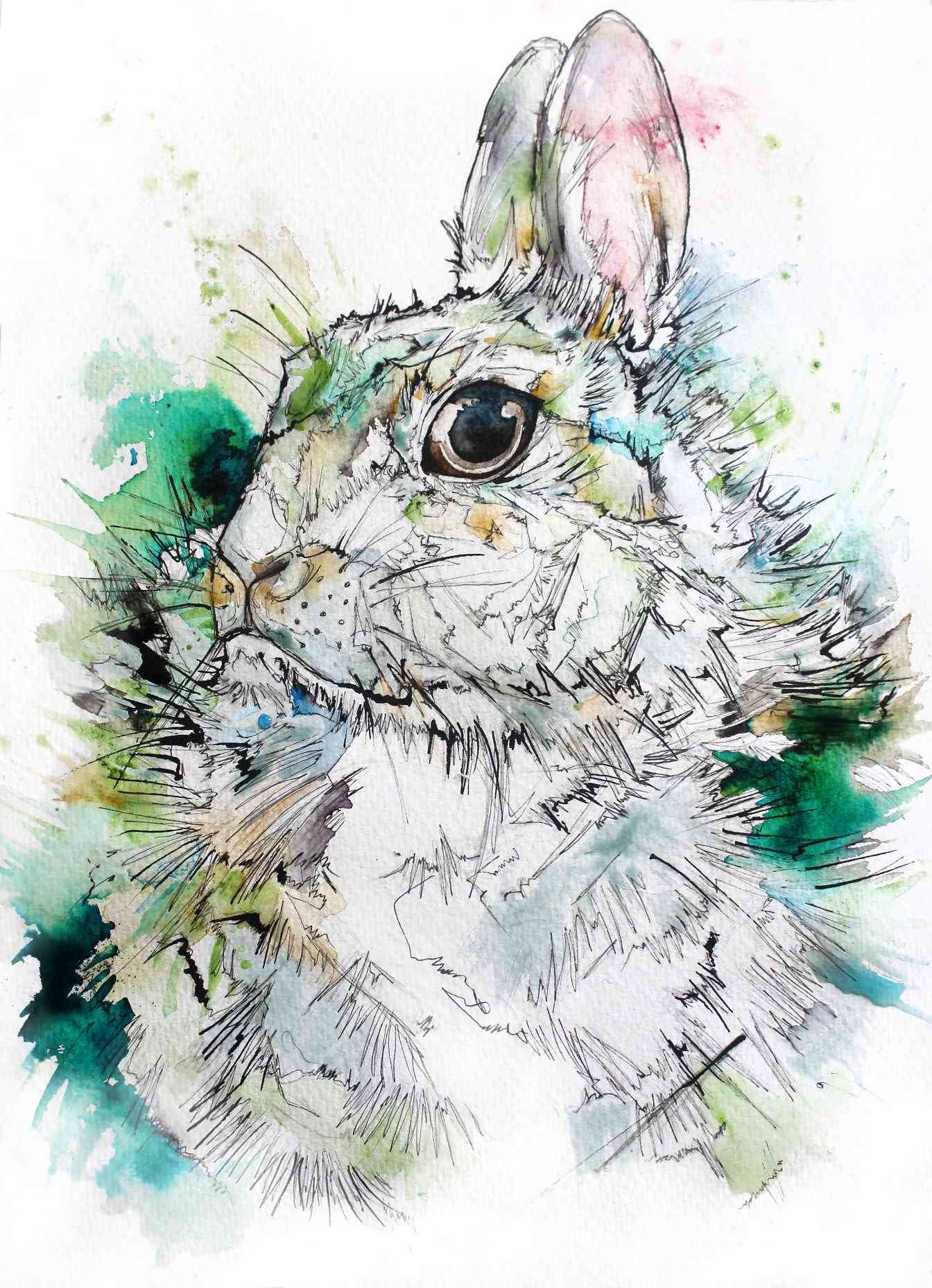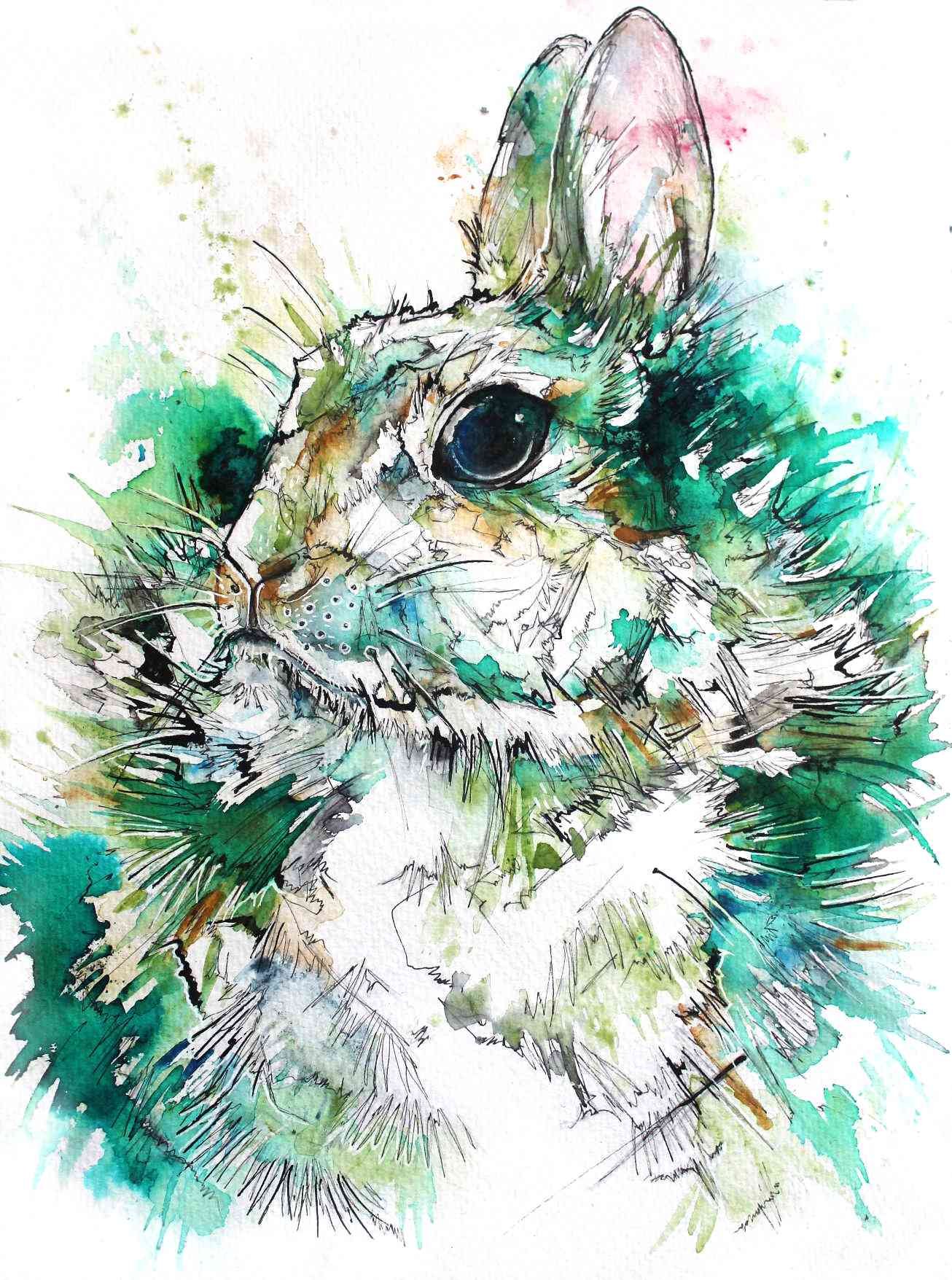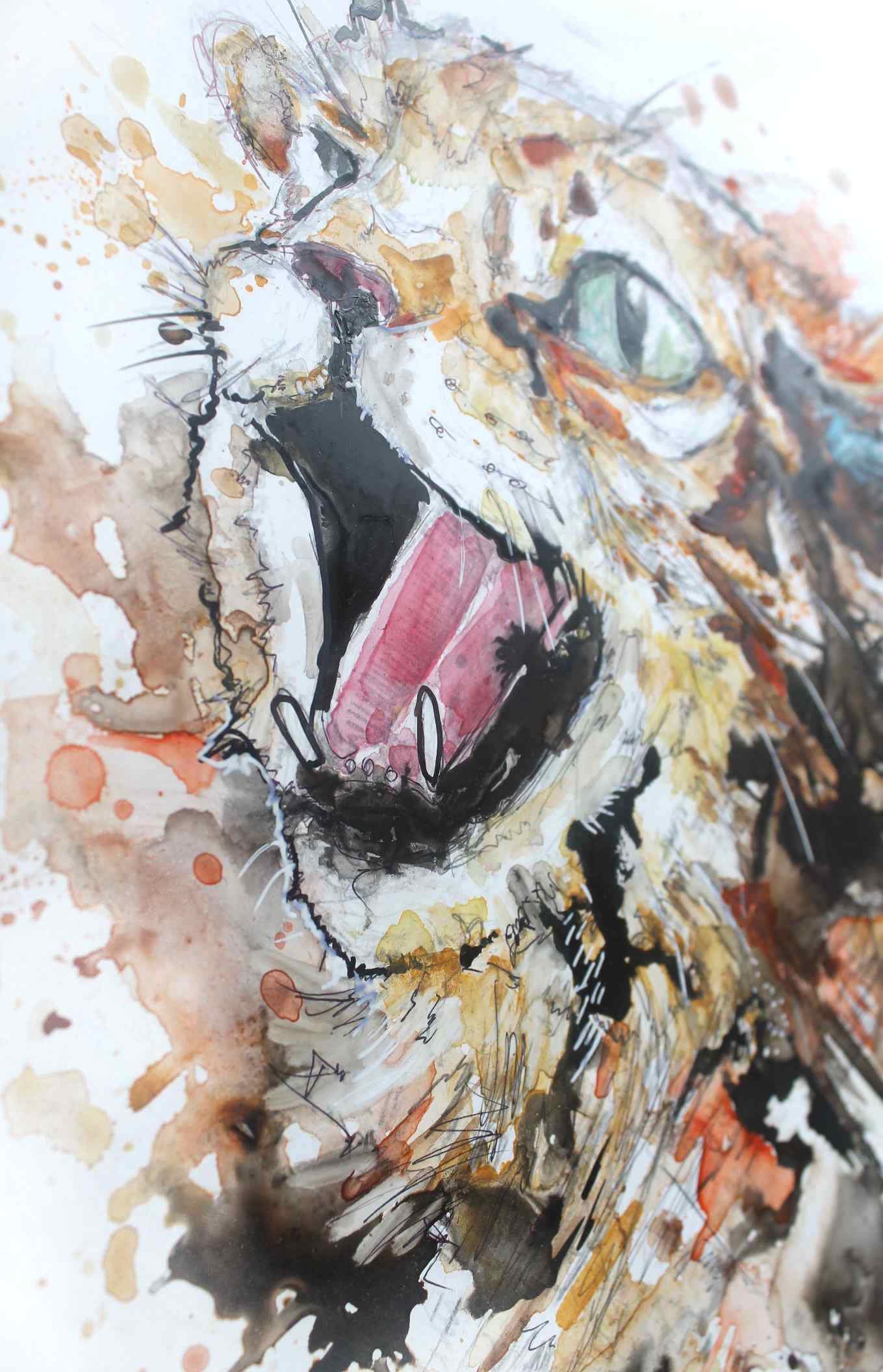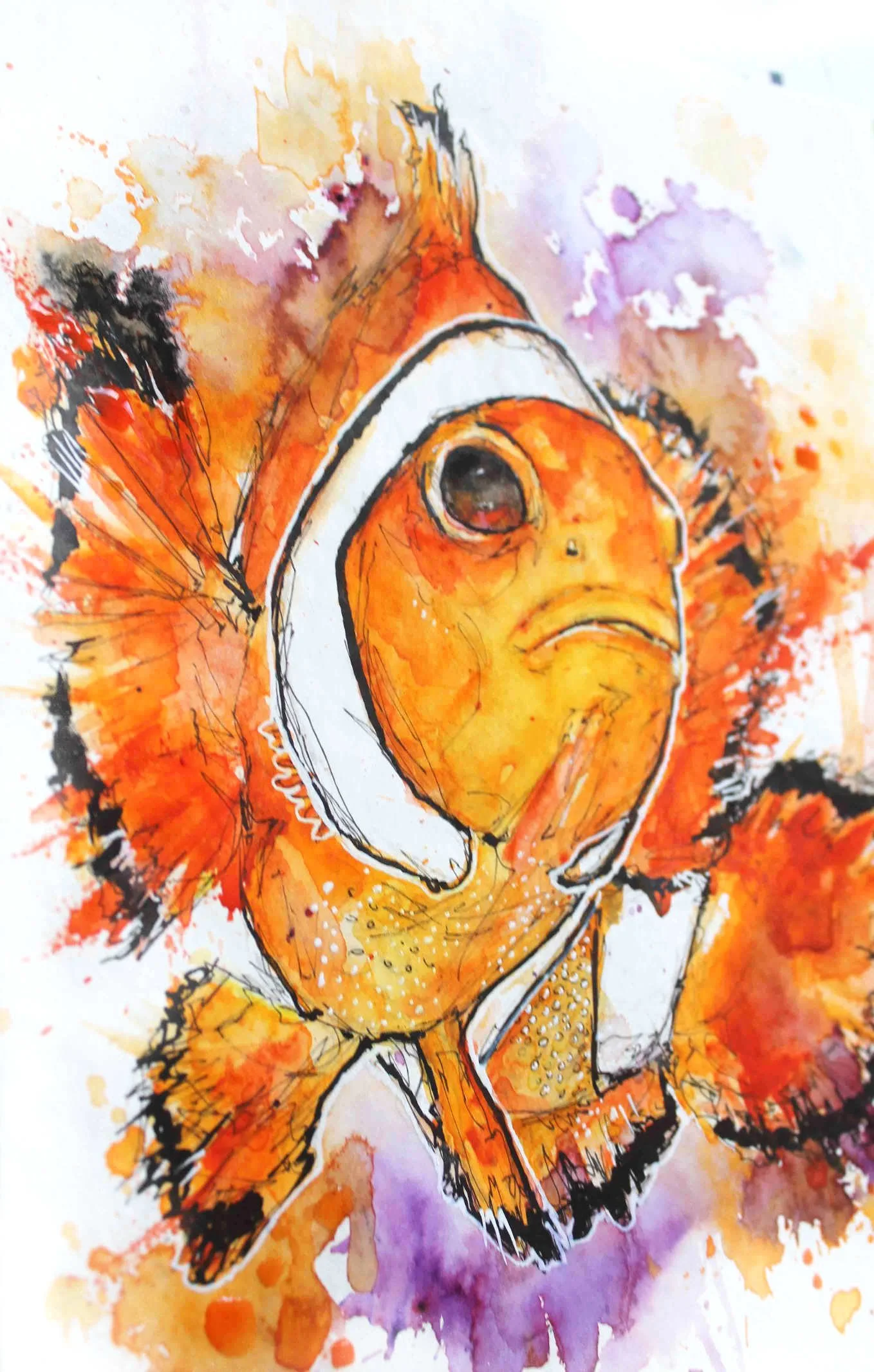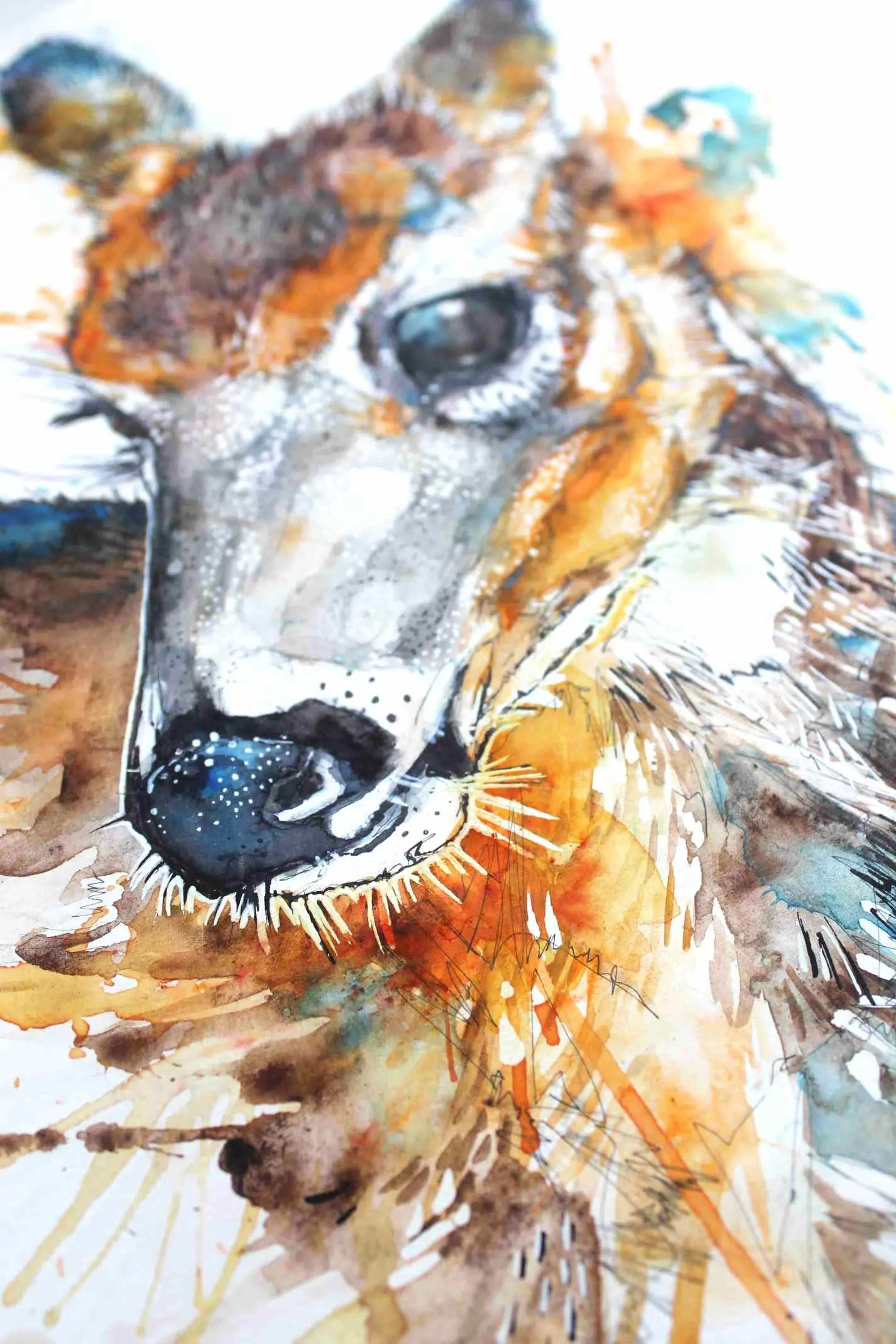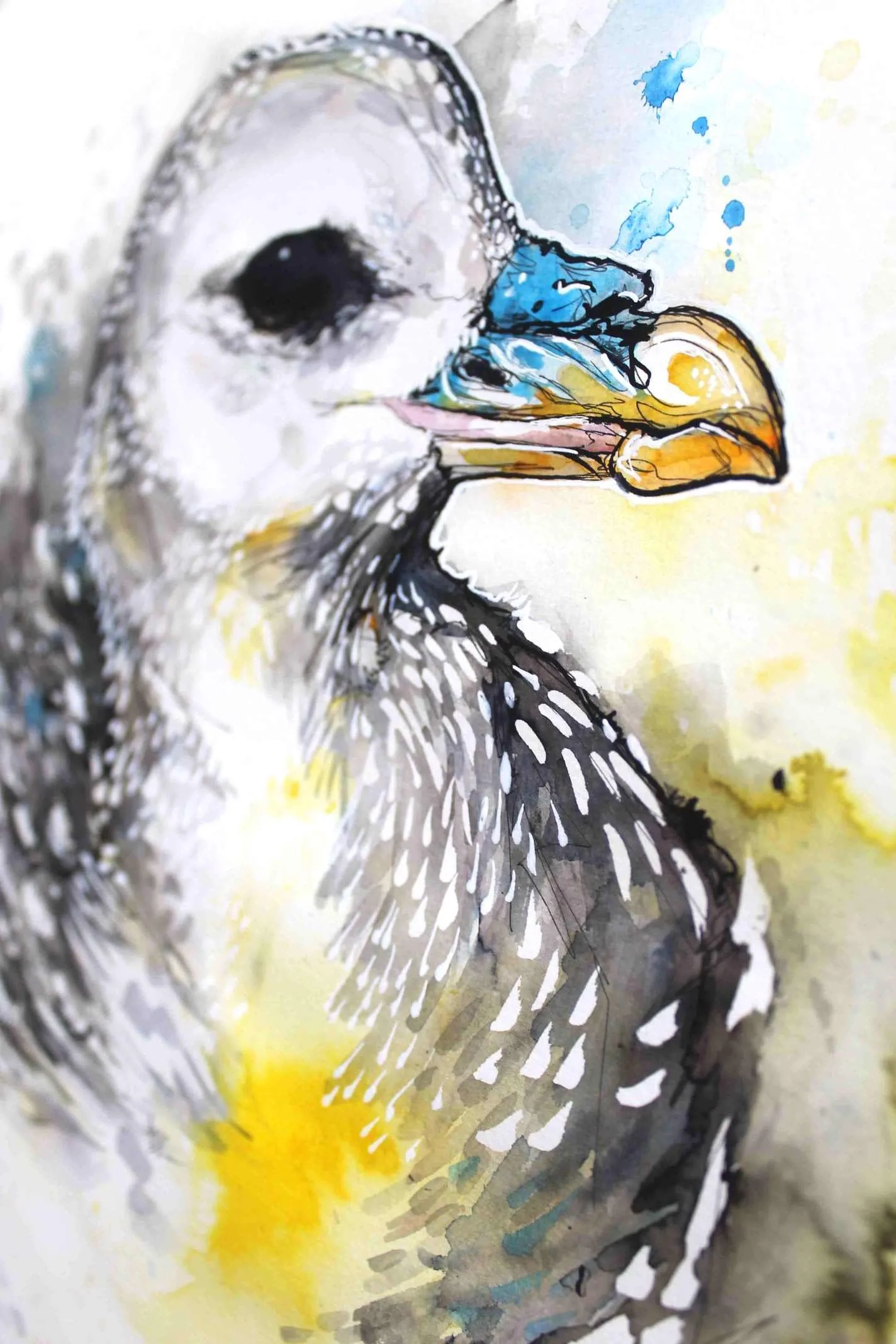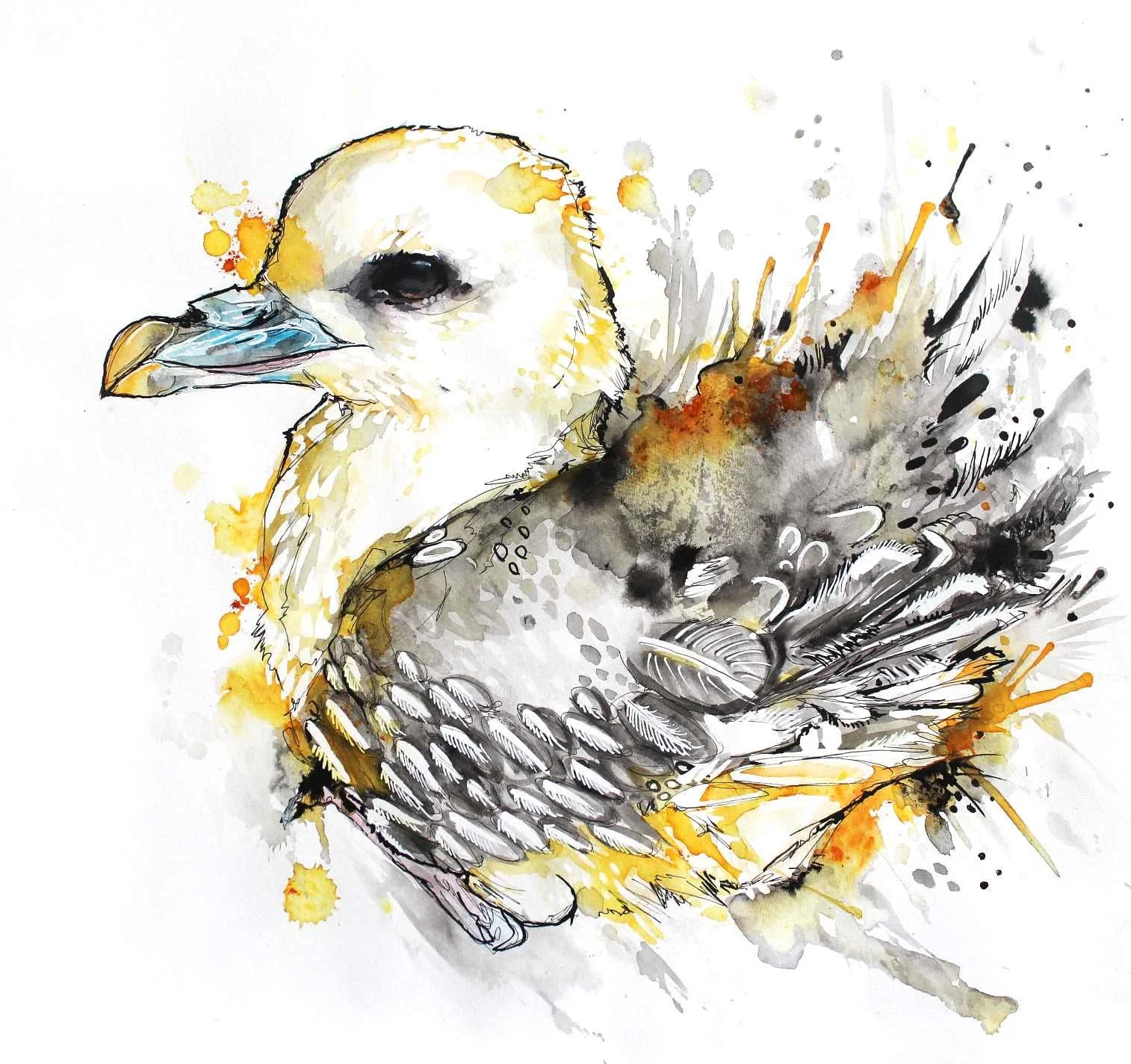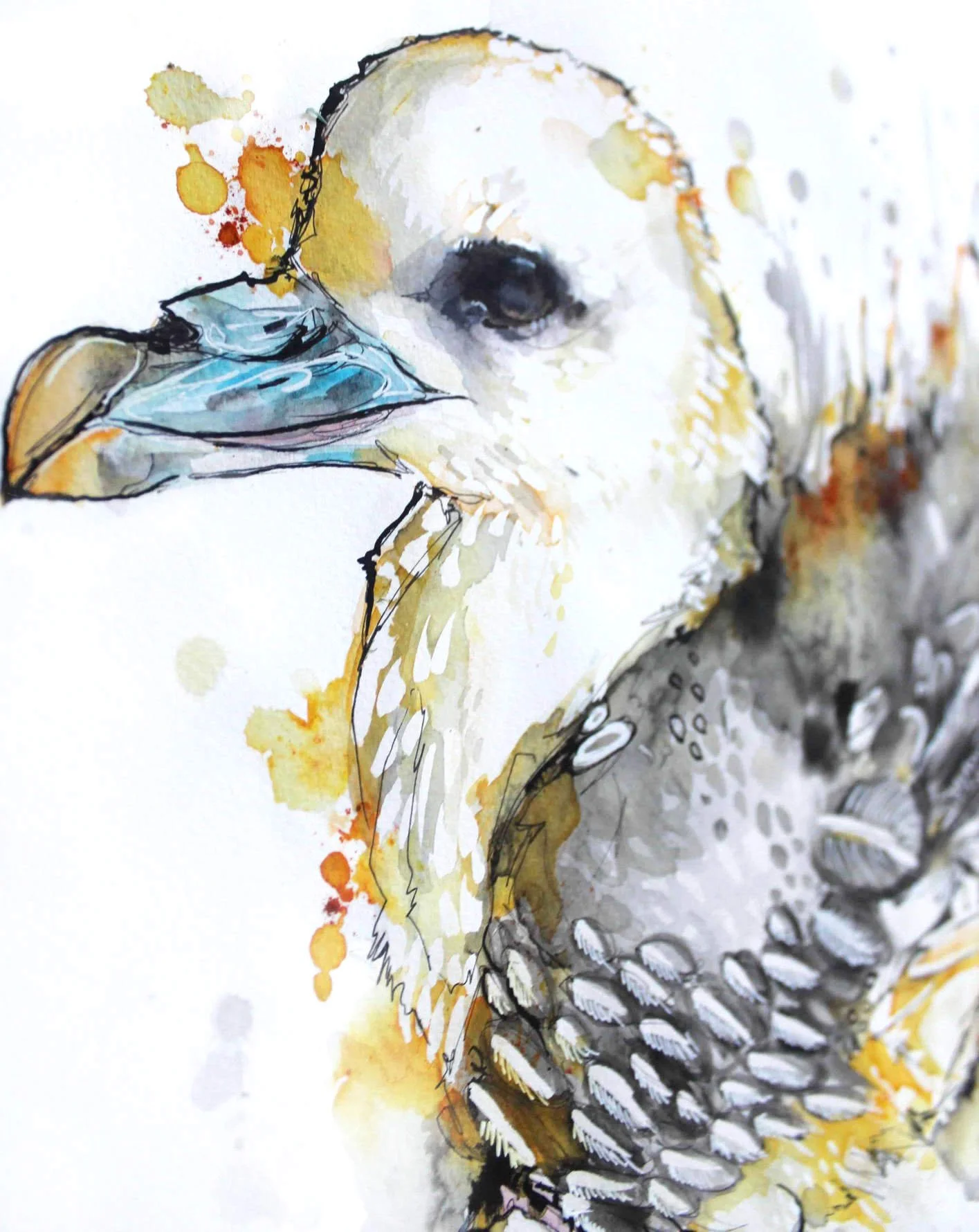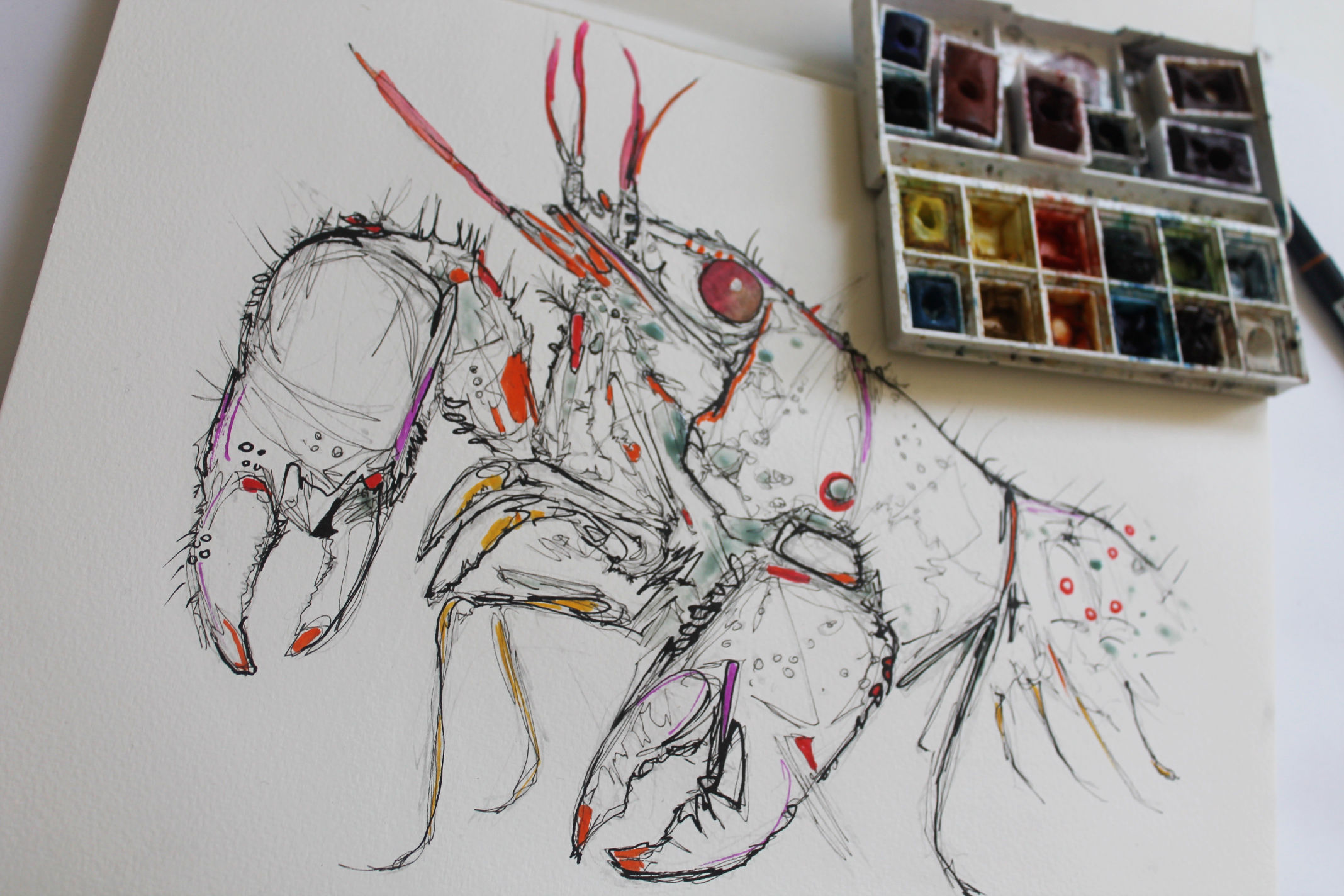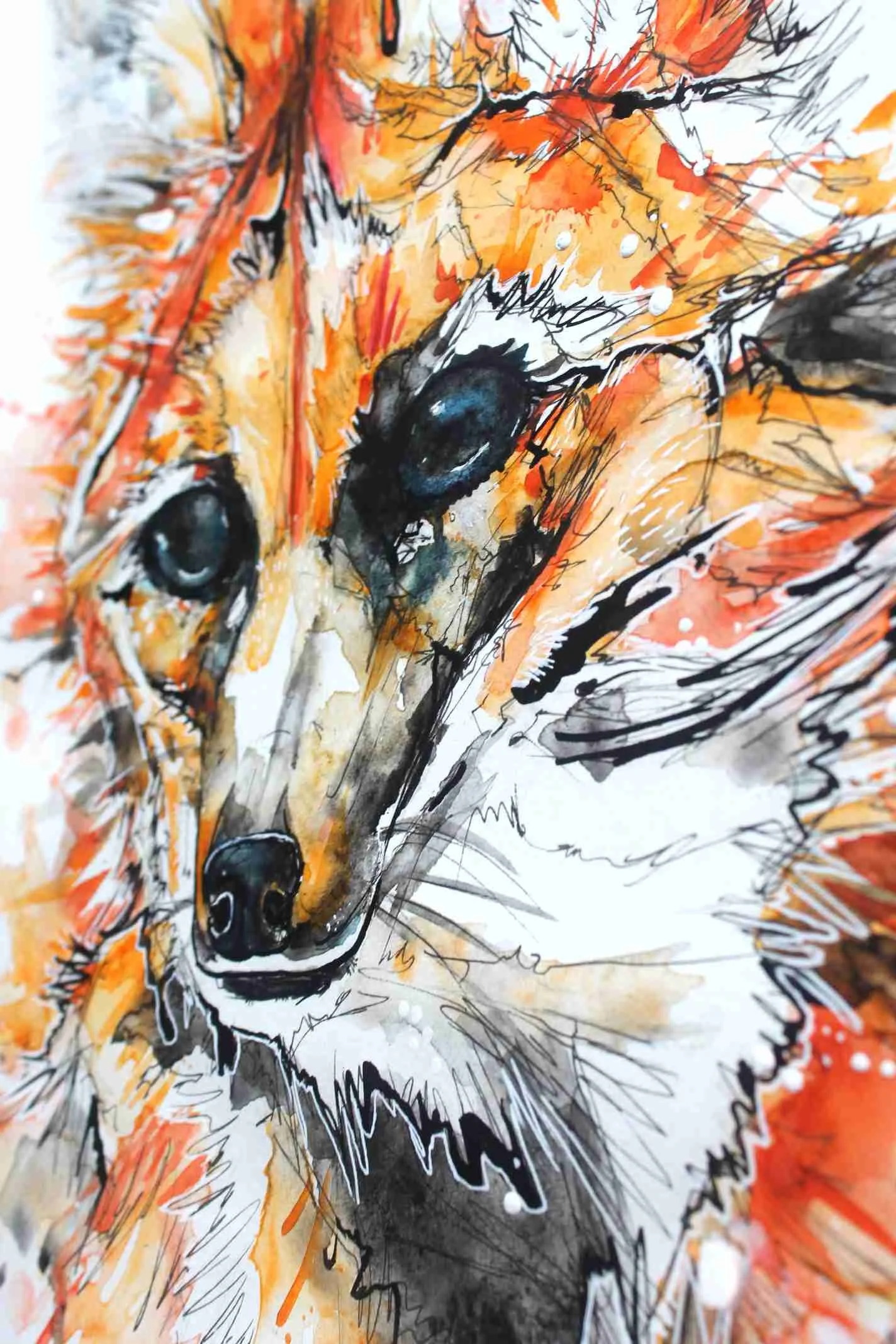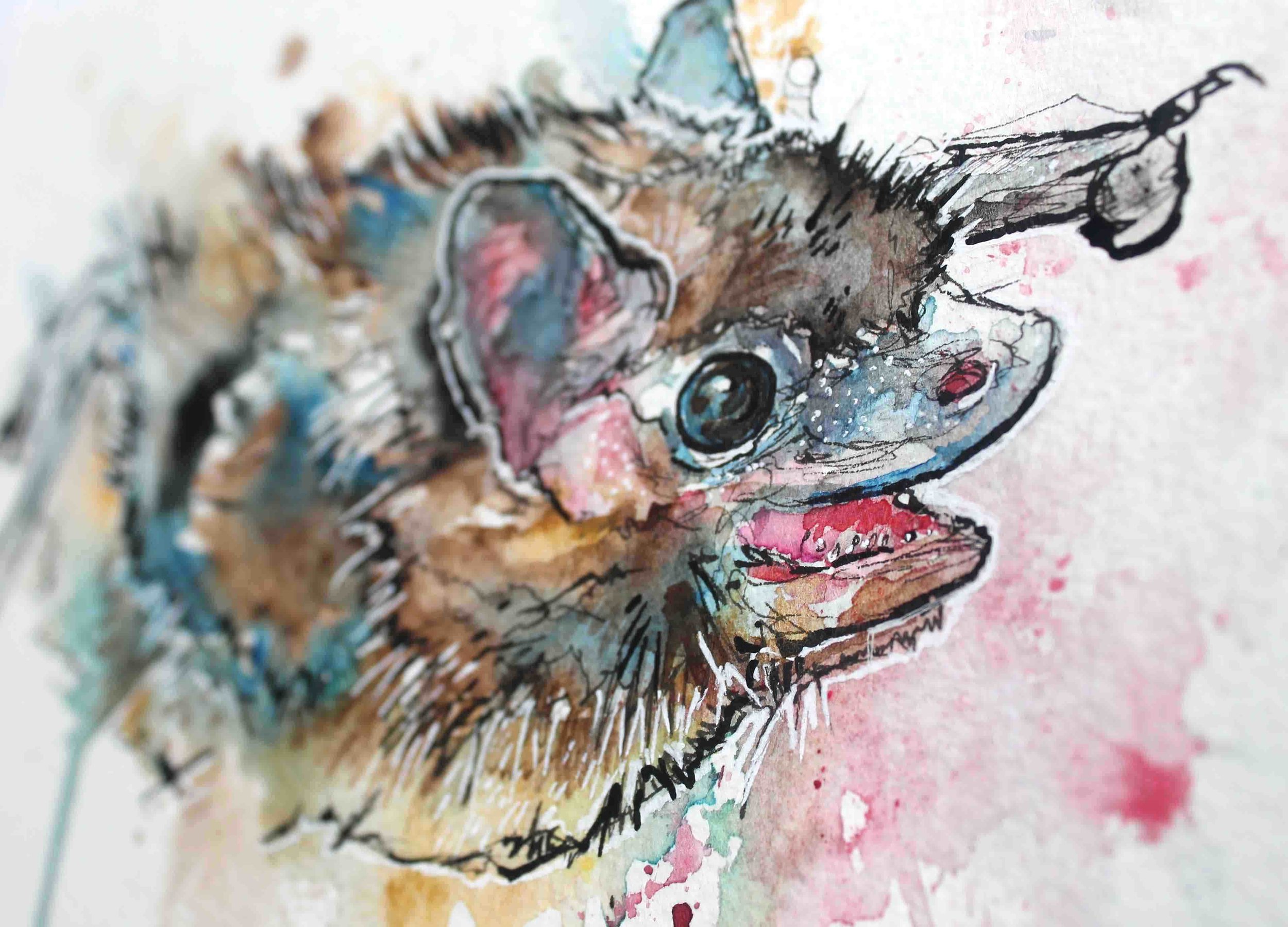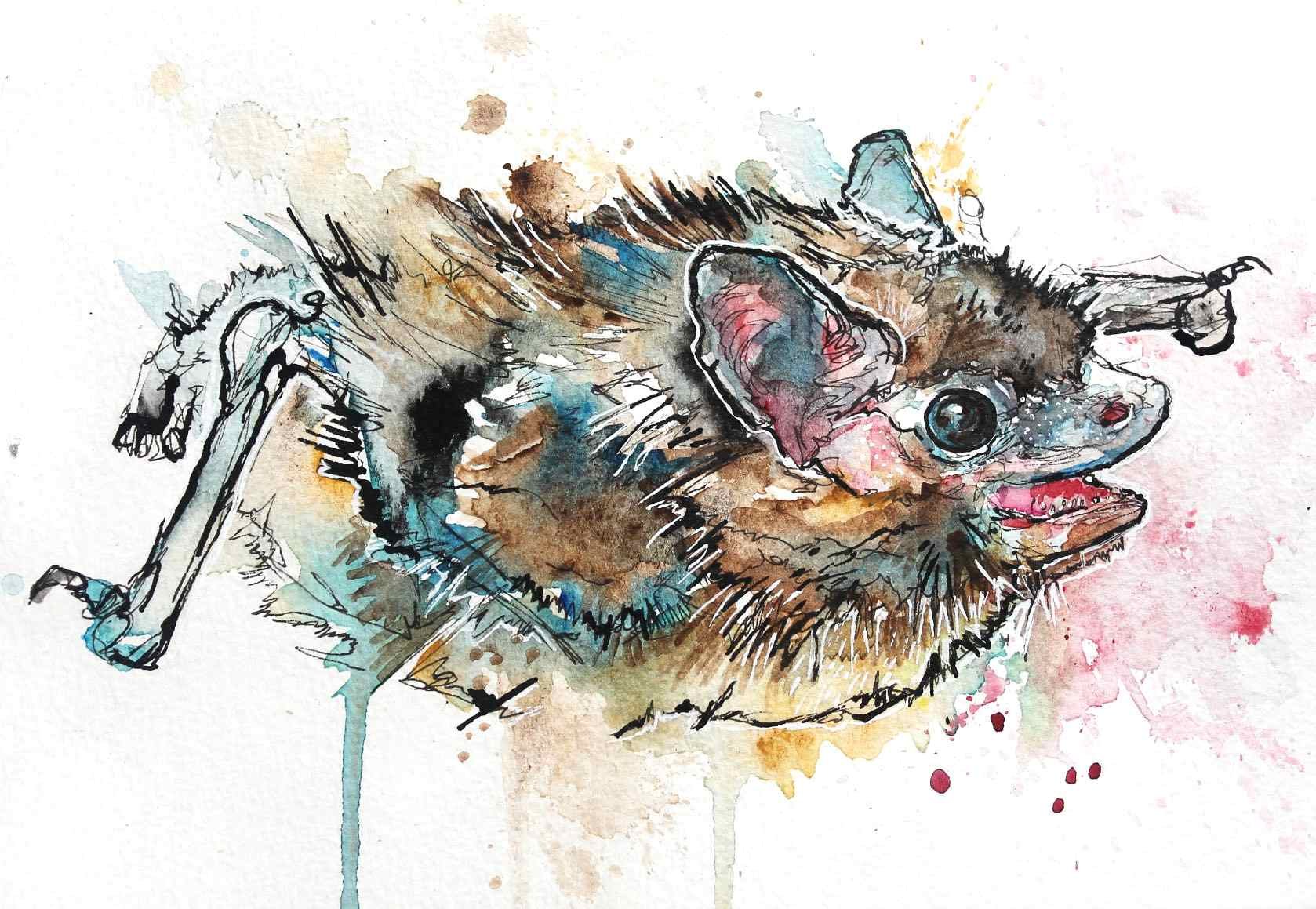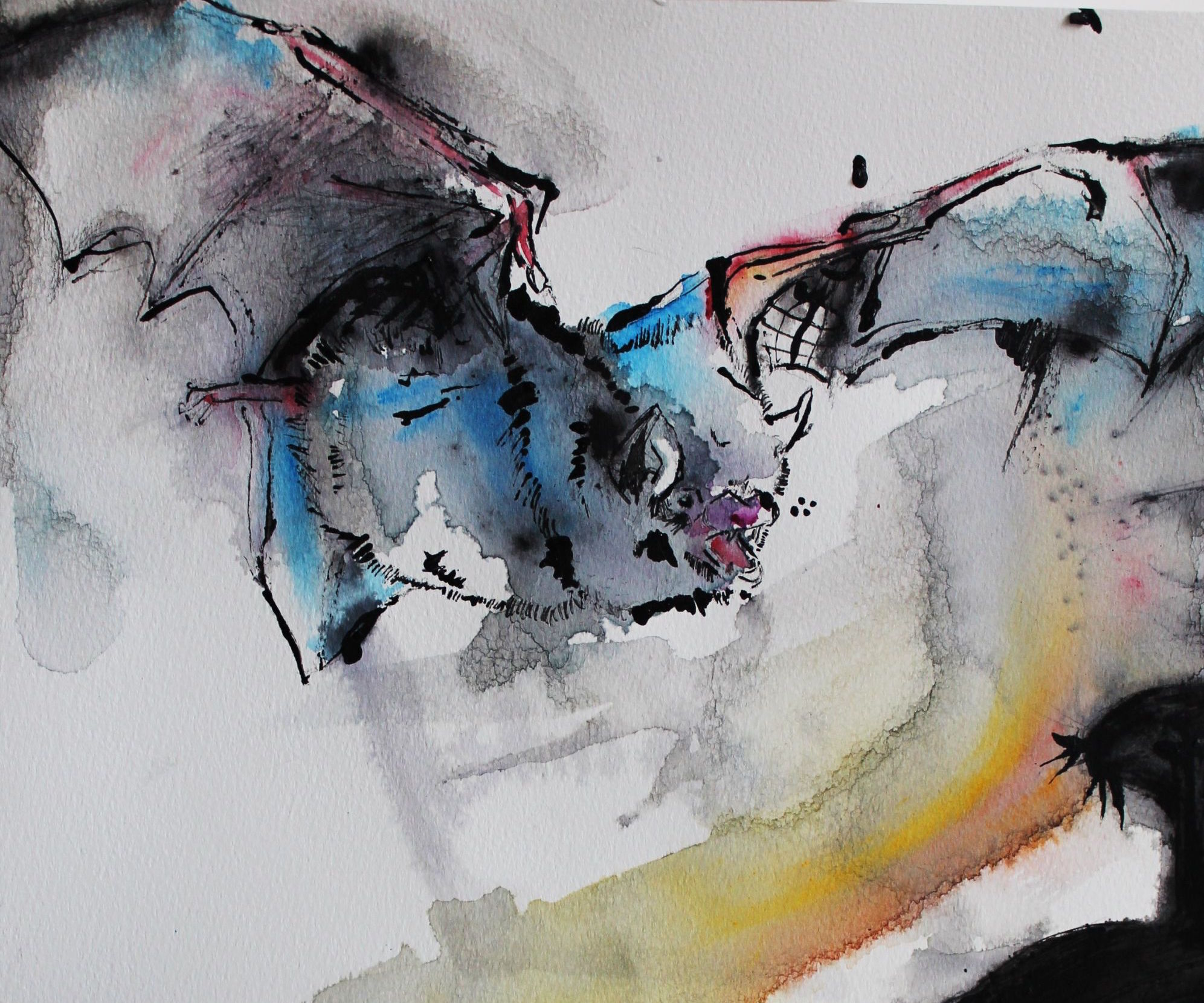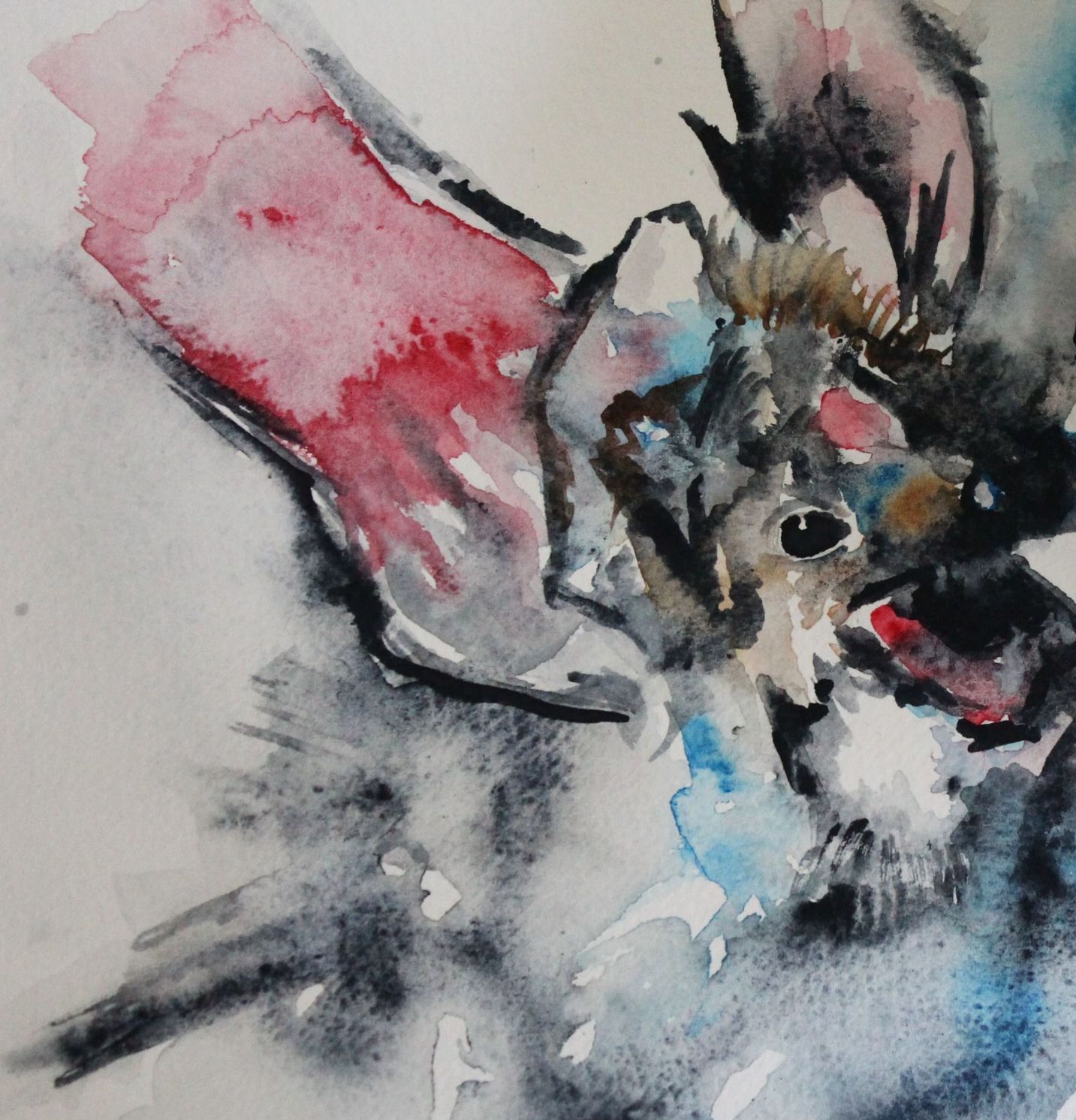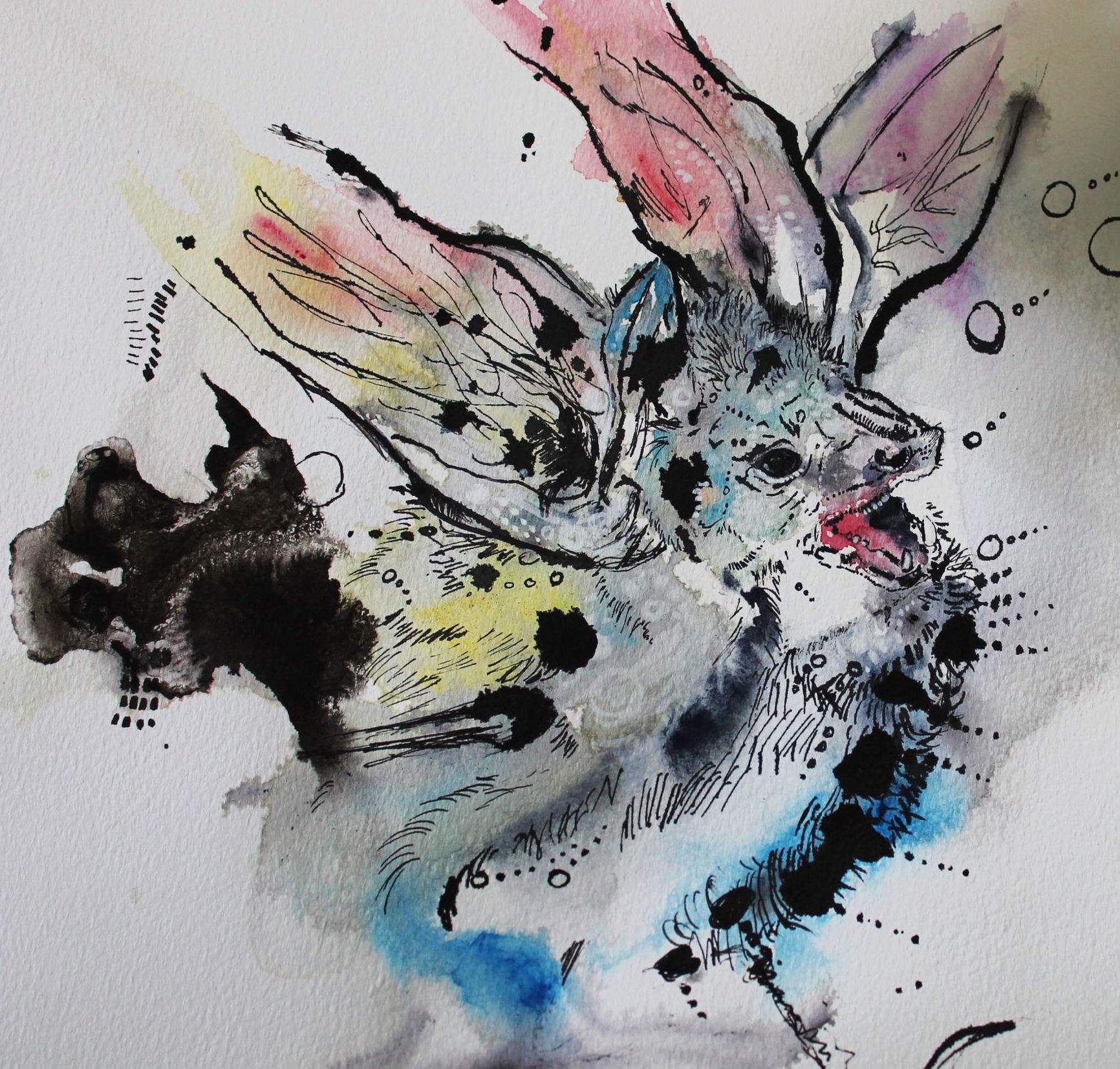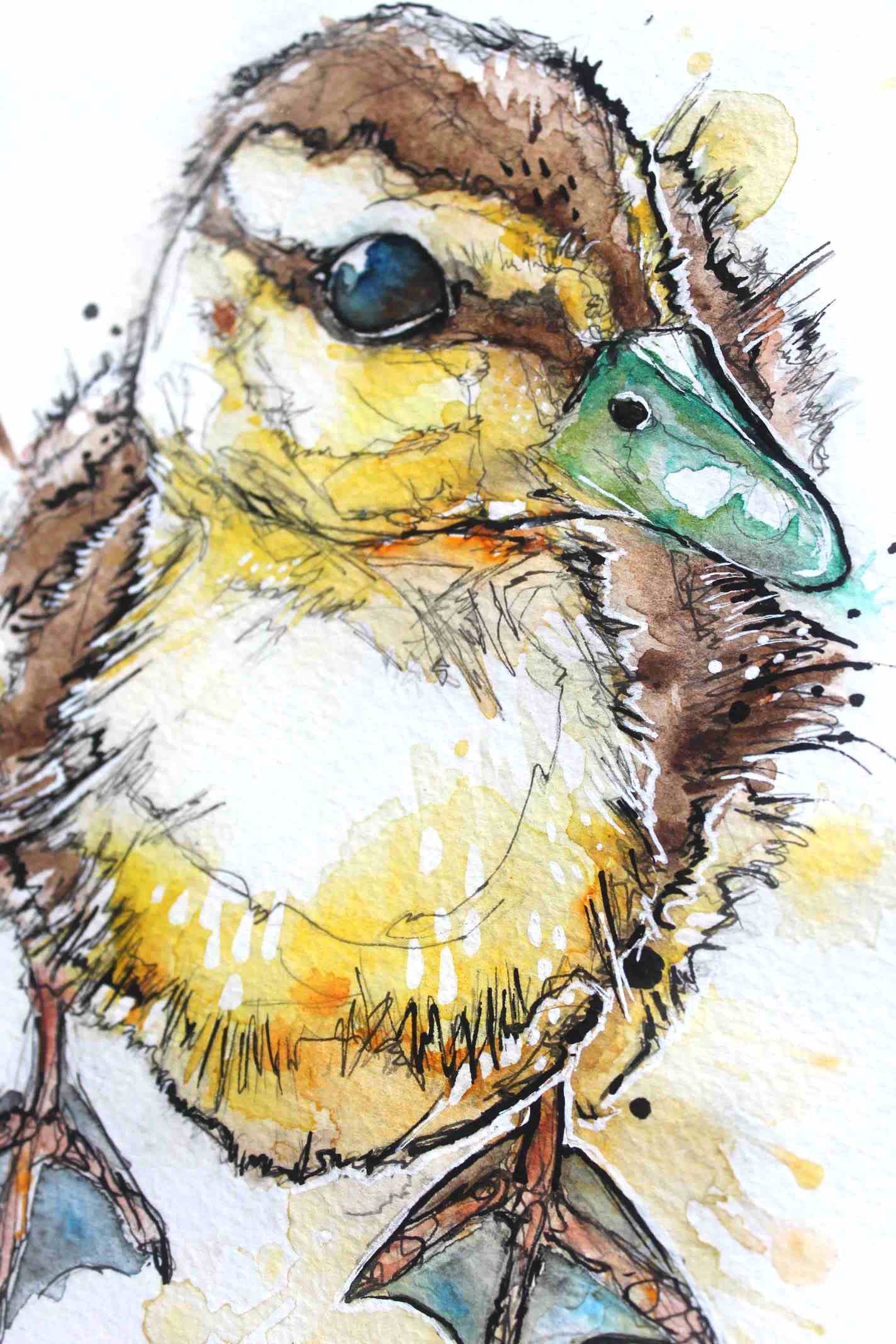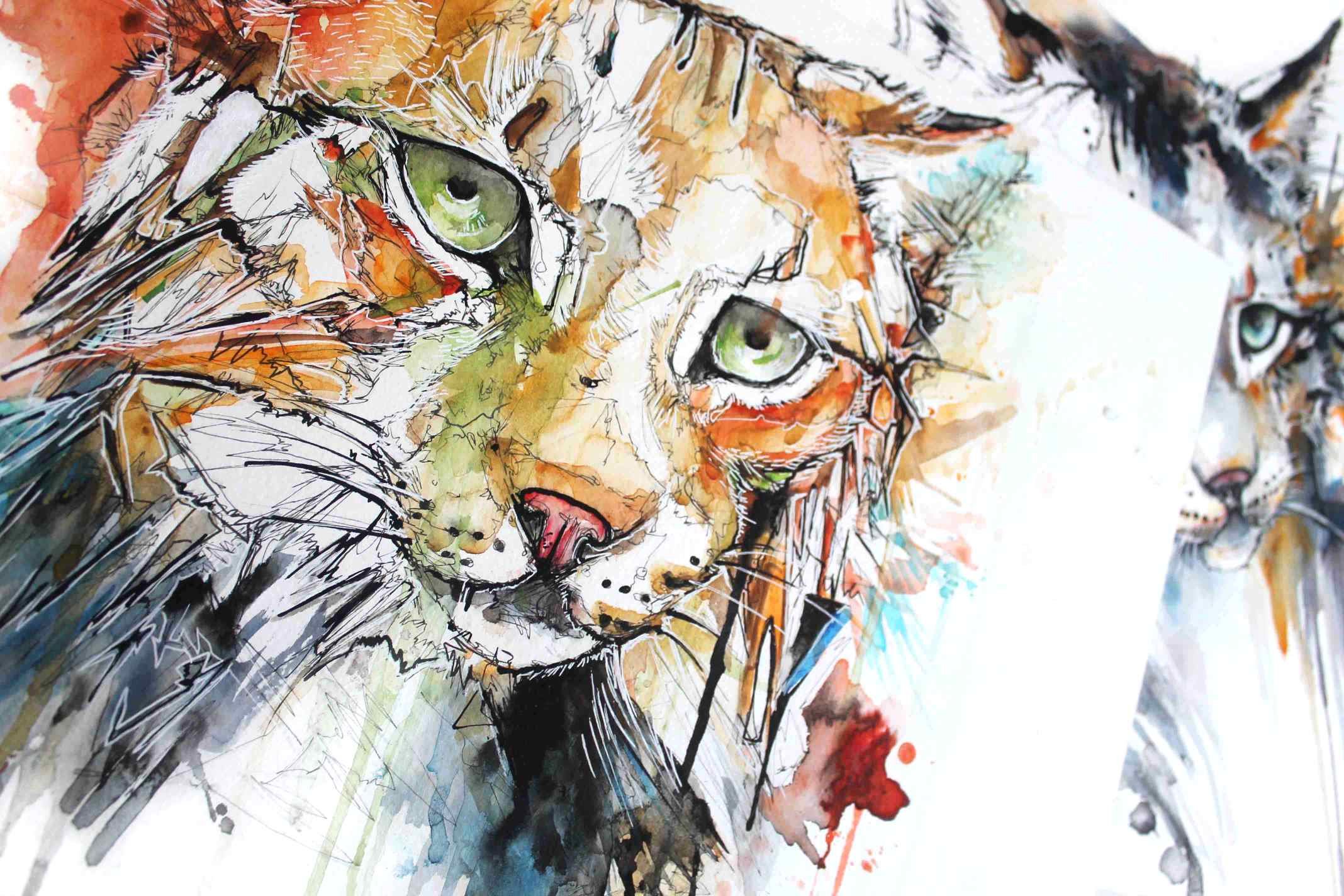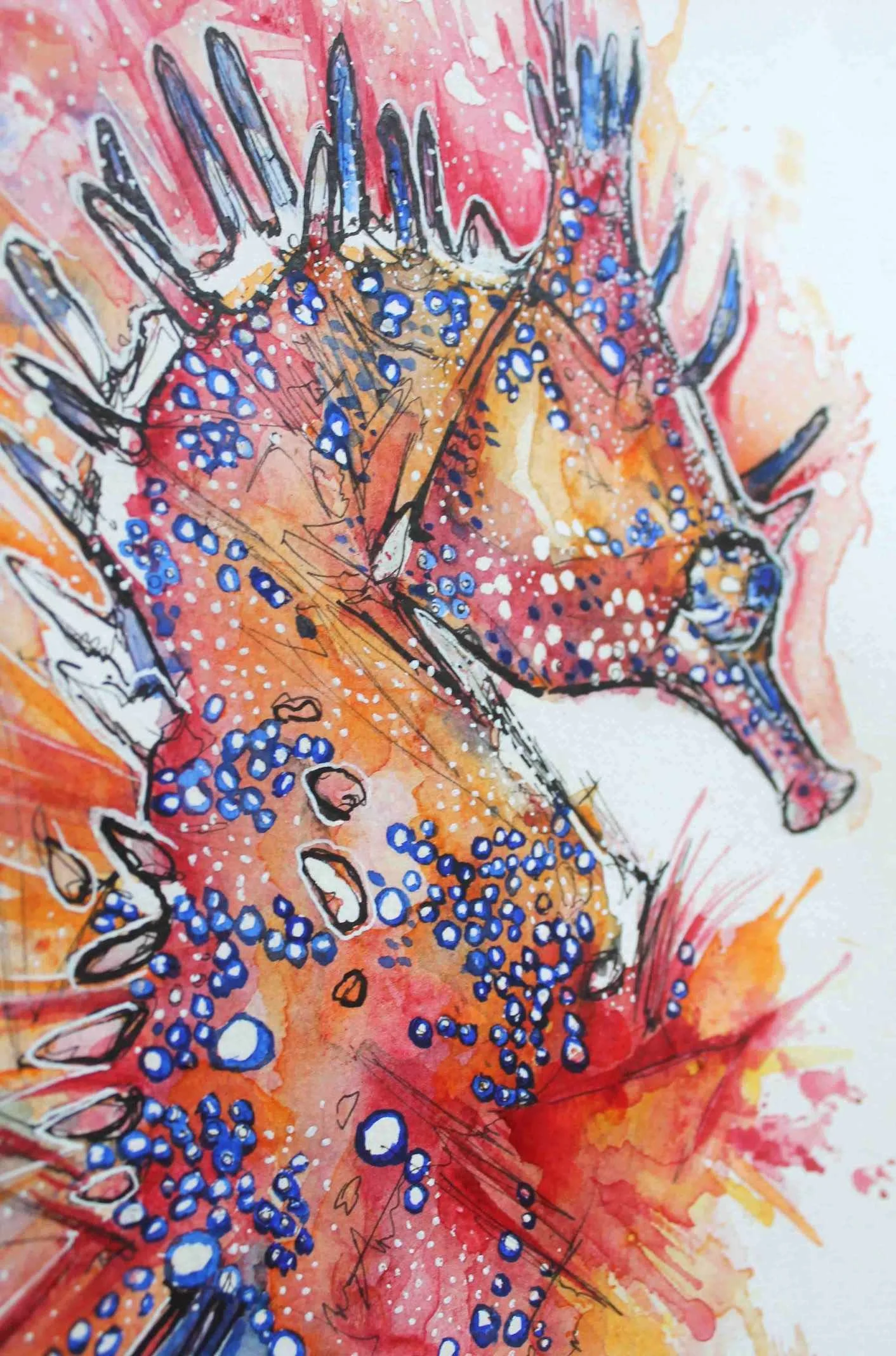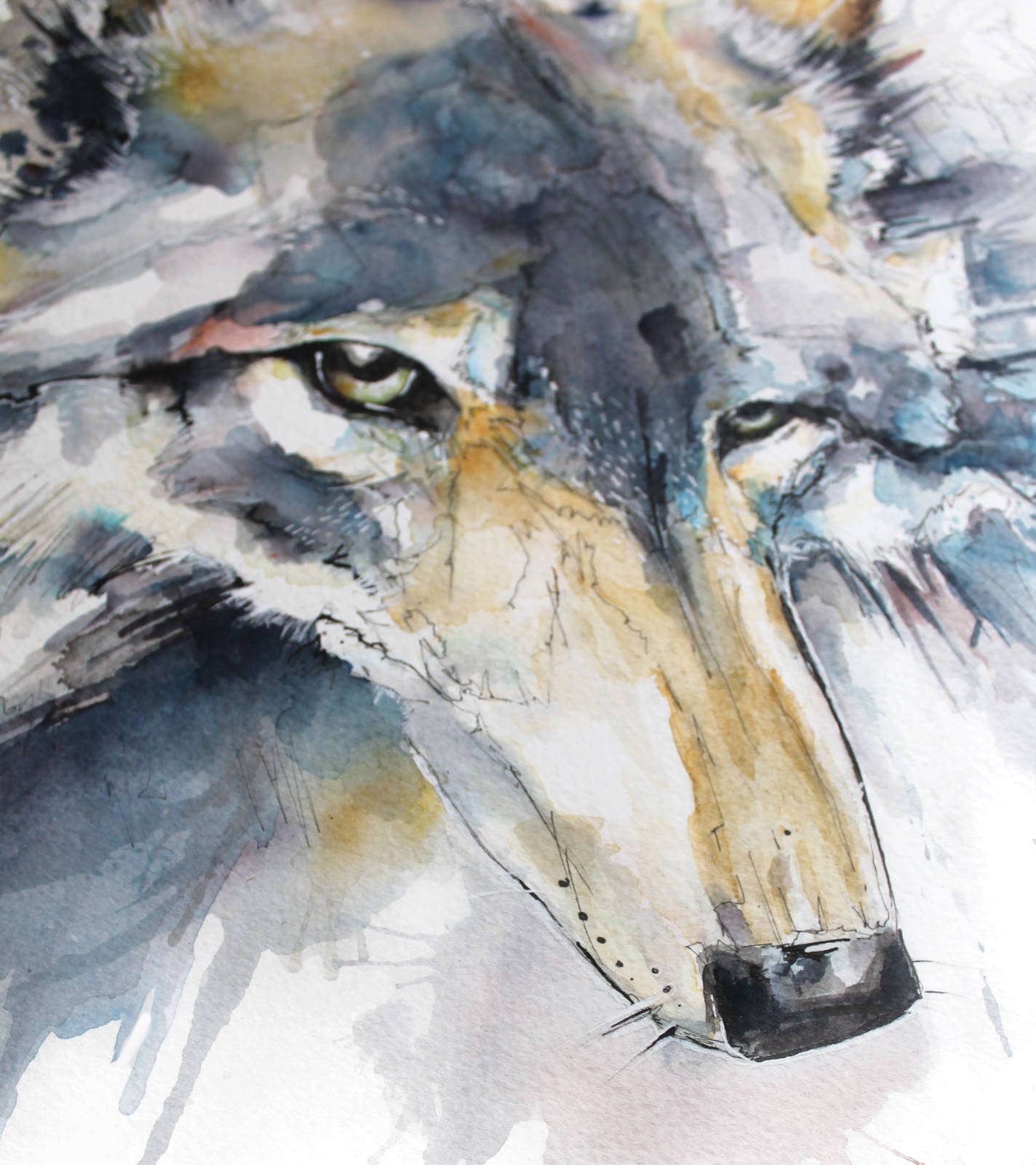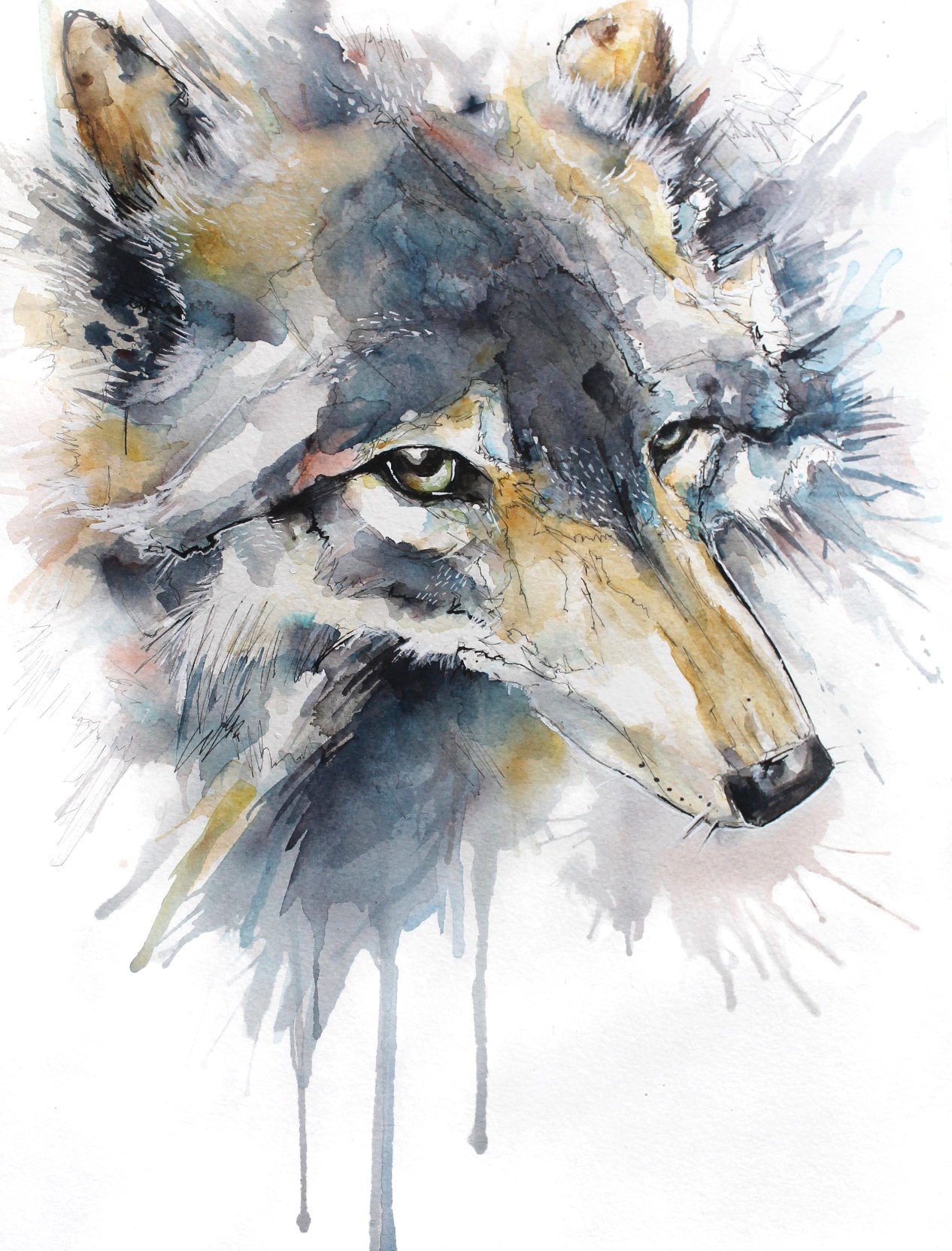I broke down my process visually, so you can get a good handle on how a piece comes together and I also wanted to summarise and address a few of the questions I have sent to me:
Victoria asks: Do you pen or paint first, and why?
I’ve always found it more comfortable and natural to pen first and paint second, it gives me a structure to work from, one which I cannot easily manipulate which means design and drawing quality is very important.
Bridin asks: How exactly do you use ink and watercolour when you are making work?
After establishing a drawing in pen and Indian ink, I apply faint layers of watercolour slowly and build them up when dry. After I’m happy with the applied colour, I identify areas I want to highlight and draw attention to by making large puddles or flecks of water on the paper which I then inject with strong ink colour.
Charlotte-Rose asks: What tools/mediums do you use?
I have found that watercolour, Brusho pigment, ink and Indian ink are my favoured media at the moment, something about the spontaneity and the risk of these mediums really appeal. I use paintbrushes, spray bottles, pipettes, straws and ink quills in my artwork, sometimes I may use a ruler to scrape off some pastel dust onto a piece if it’s screaming for a dusting — particularly if my work features insects.
